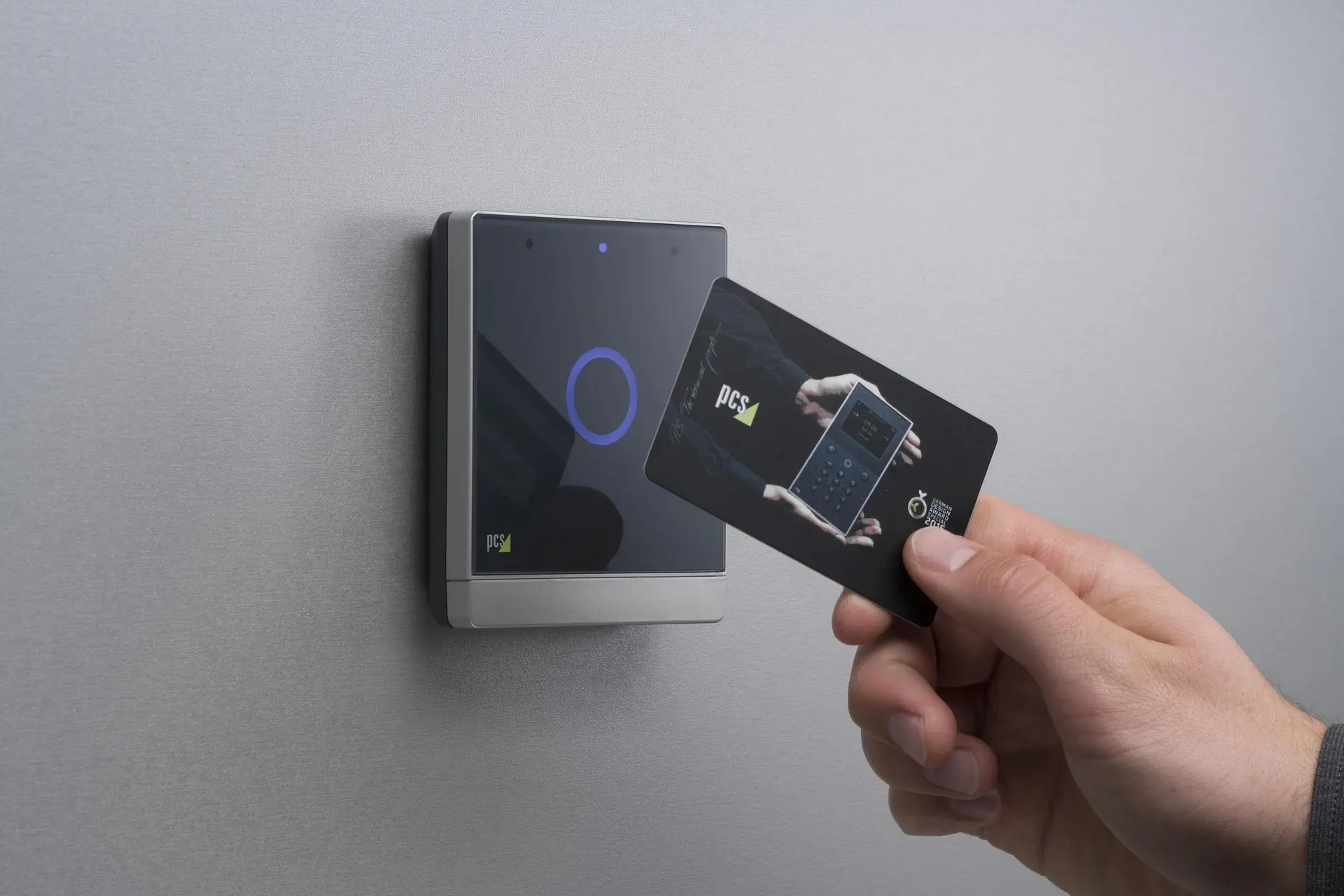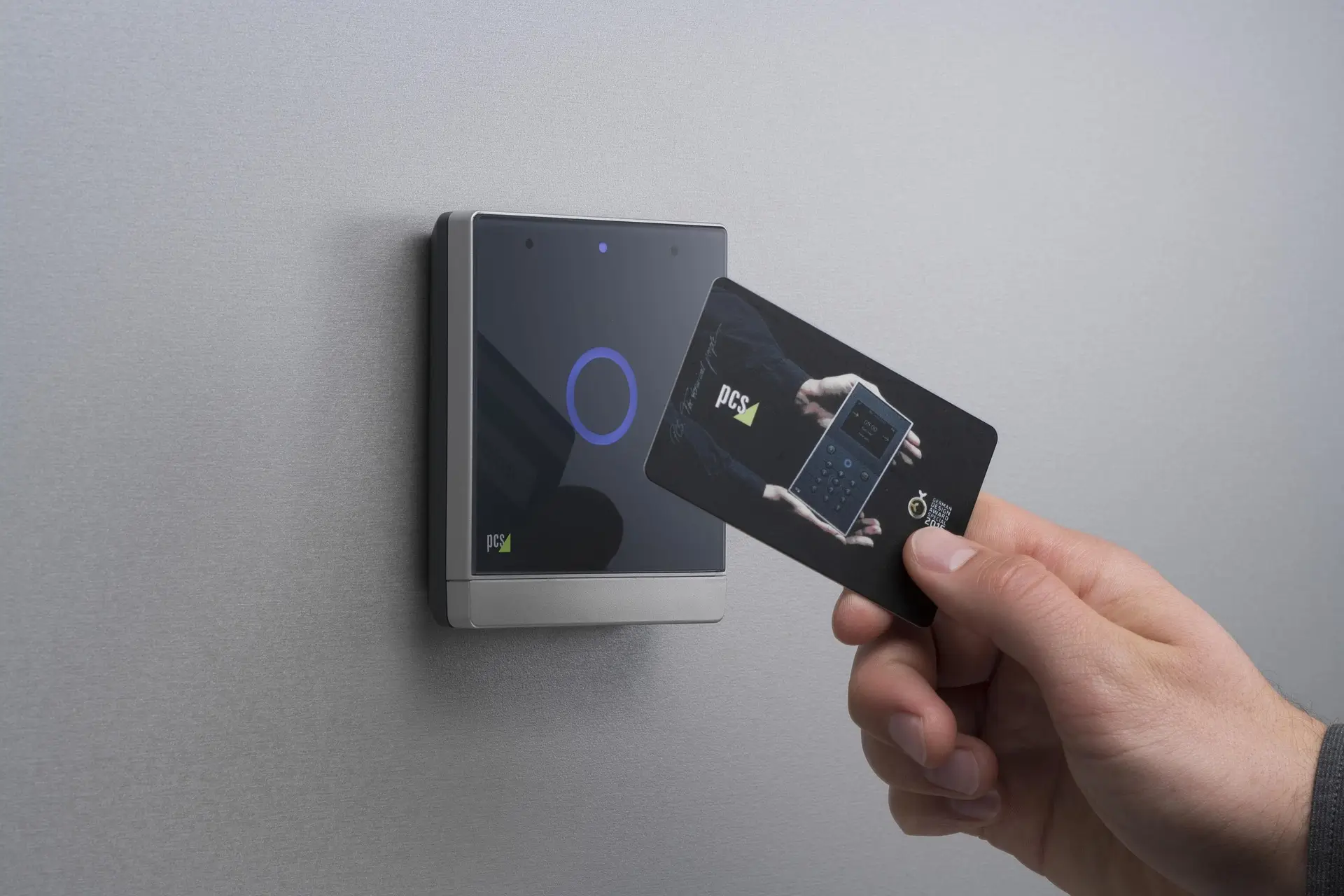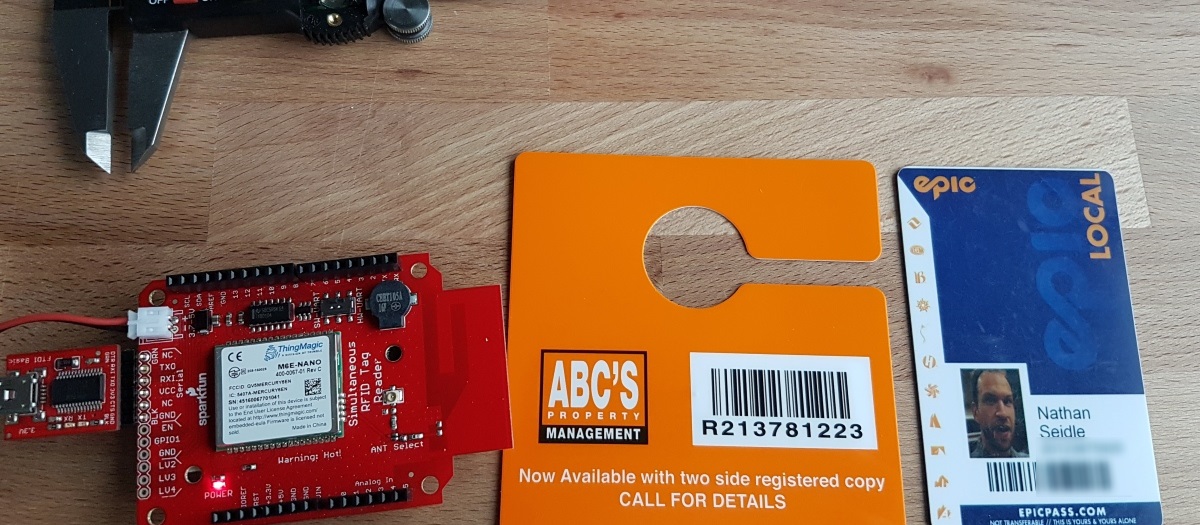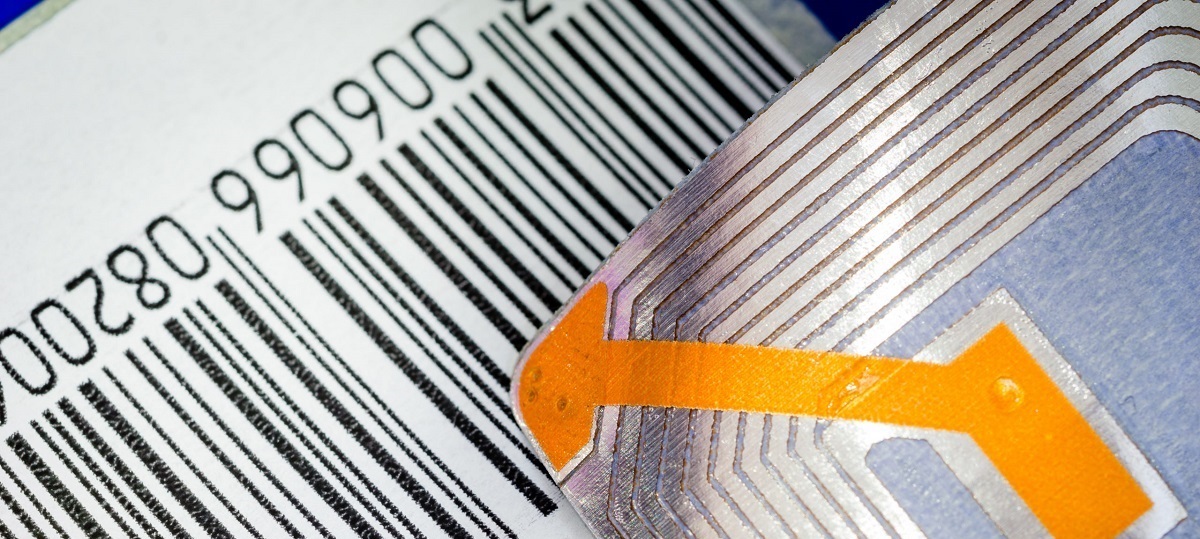Introduction
Radio-Frequency Identification (RFID) is a technology that uses radio waves to identify and track objects. It has become increasingly popular and widely applied in various industries, revolutionizing the way businesses operate. RFID tags, consisting of a microchip and an antenna, are attached to objects or embedded in them, allowing for easy identification and data transfer.
RFID technology offers numerous benefits, including improved efficiency, accuracy, and security. It enables real-time tracking and monitoring of assets, inventory, and personnel, resulting in streamlined operations and cost savings. From retail and inventory management to healthcare and transportation, RFID finds applications in diverse sectors.
In this article, we will delve into the different industries that utilize RFID technology and explore the specific areas where it proves to be most effective. From supply chain management to entertainment and events, RFID has become an indispensable tool that enhances operational efficiency and provides valuable insights for businesses.
By implementing RFID systems, companies can achieve better visibility, control, and traceability of their assets, leading to improved decision-making and enhanced customer satisfaction. Moreover, RFID technology has opened doors to innovative solutions in areas such as waste management, anti-counterfeiting measures, and personal identification.
Join us on this journey as we explore the wide-ranging applications of RFID technology across various industries. Whether you’re a business owner, a technology enthusiast, or simply curious about the latest advancements, this article will provide a comprehensive overview of how RFID is transforming the way we interact with the world around us.
Retail and Inventory Management
RFID technology has revolutionized the retail industry by offering efficient and accurate inventory management solutions. Traditional barcode systems require line-of-sight scanning, which can be time-consuming and prone to errors. RFID, on the other hand, enables retailers to track items in real-time without physically scanning each product.
By attaching RFID tags to individual items or product packaging, retailers can easily monitor stock levels, identify out-of-stock items, and prevent theft. This technology enables automatic inventory tracking as items pass through RFID-enabled scanners at various points in the supply chain, from warehouses to store shelves.
With RFID, retailers can quickly locate specific products, eliminating the need for extensive manual searches. This results in improved operational efficiency and reduced labor costs. Additionally, accurate inventory data allows retailers to make informed decisions regarding reordering, restocking, and pricing.
RFID technology also enhances the shopping experience for customers. It enables retailers to offer features such as self-checkout and smart shelves that automatically detect which items are placed or removed. This not only streamlines the purchasing process but also reduces checkout time and enhances customer satisfaction.
Furthermore, RFID technology helps in preventing theft and unauthorized access. With RFID-enabled tags and sensors, retailers can implement anti-shoplifting measures and track high-value items in real-time. This level of security provides peace of mind for both retailers and customers.
In summary, RFID technology is transforming retail and inventory management by improving efficiency, reducing errors, and enhancing security. It streamlines operations, increases visibility, and provides accurate inventory data, leading to cost savings and improved customer satisfaction. As the retail industry continues to evolve, RFID will play a crucial role in enabling retailers to stay competitive in the modern market.
Supply Chain and Logistics
RFID technology has revolutionized supply chain and logistics operations by providing real-time visibility and accurate tracking throughout the entire process. From manufacturing to distribution to retail, RFID enhances efficiency, reduces costs, and improves overall supply chain management.
One of the key advantages of RFID in supply chain and logistics is its ability to automate data capture and improve inventory accuracy. By tagging goods with RFID labels, companies can easily track and trace products as they move through different stages of the supply chain. This eliminates the need for manual data entry and reduces the risk of errors and discrepancies in inventory records.
With RFID technology, companies can monitor the movement of goods in real-time. As products are shipped, RFID scanners can automatically read and record information about each item, including its location, temperature, and condition. This enables better inventory control, reduces stockouts, and minimizes the risk of overstocking.
RFID also plays a crucial role in ensuring product authenticity and combating counterfeiting in the supply chain. By using RFID tags with unique identifiers, companies can verify the authenticity of products and identify any tampering or unauthorized handling. This helps protect brand reputation and ensures that customers receive genuine, high-quality goods.
Another significant advantage of RFID in supply chain and logistics is its ability to optimize warehouse and distribution center operations. RFID technology enables efficient inventory management, accurate order picking, and automated sorting and routing of shipments. This streamlines the entire process, reduces manual labor, and improves order fulfillment speed and accuracy.
In addition, RFID plays a crucial role in ensuring compliance with regulations and industry standards. It enables companies to track and verify the movement of hazardous materials, monitor temperature-sensitive goods, and maintain proper documentation and records throughout the supply chain.
Overall, RFID has transformed supply chain and logistics operations by providing real-time visibility, improving inventory accuracy, reducing costs, and enhancing product authentication. As the global supply chain becomes increasingly complex, RFID technology will continue to play a vital role in optimizing operations and ensuring efficient and secure movement of goods.
Healthcare and Medical Industry
The healthcare and medical industry greatly benefits from the implementation of RFID technology. It improves patient safety, enhances operational efficiency, and enables better tracking and management of medical equipment and supplies.
RFID tags can be used to track and identify patients, reducing the potential for medical errors. By attaching RFID bracelets or badges to patients, healthcare providers can accurately match patients with their medical records and medications. This helps ensure that the right treatment is administered to the right patient, reducing the risk of medication errors and improving patient safety.
RFID technology also simplifies the tracking and management of medical equipment and supplies. By tagging items such as defibrillators, wheelchairs, and infusion pumps, healthcare facilities can efficiently locate and monitor the usage and maintenance of these assets. This streamlines equipment inventory management, reduces costs associated with lost or misplaced items, and ensures that critical equipment is readily available when needed.
In addition, RFID helps enhance the efficiency of inventory management and supply chain processes in healthcare settings. By tagging and tracking pharmaceuticals, vaccines, and other medical supplies, healthcare providers can ensure accurate inventory counts, prevent stockouts, and reduce waste due to expired items. Real-time visibility into inventory levels allows for proactive restocking and efficient supply chain management, ultimately improving patient care.
RFID technology also plays a critical role in maintaining compliance with regulatory requirements, such as proper storage and handling of sensitive medical supplies. RFID tags can monitor and track temperature-sensitive medications or blood products, ensuring they are stored and transported at the appropriate conditions. This guarantees the integrity and safety of these essential products.
Furthermore, RFID technology aids in patient flow management and enhances the overall patient experience. By using RFID tags to track patients within healthcare facilities, providers can optimize appointment scheduling, reduce wait times, and improve the overall efficiency of operations. This leads to better patient satisfaction and improved quality of care.
In summary, RFID technology has become an invaluable asset in the healthcare and medical industry. It improves patient safety, enhances operational efficiency, enables better tracking and management of medical equipment and supplies, and ensures compliance with regulatory standards. As the industry continues to embrace technological advancements, RFID will continue to play a significant role in transforming healthcare delivery and improving patient outcomes.
Access Control and Security
RFID technology has revolutionized access control and security systems, offering more efficient and secure methods of authentication and monitoring. By utilizing RFID tags or cards, organizations can enhance their access control measures and ensure that only authorized personnel have access to restricted areas.
One of the key advantages of RFID in access control is its convenience compared to traditional methods like keys or swipe cards. RFID-enabled access control systems use contactless technology, allowing for quicker and easier entry. Users simply need to bring their RFID card or tag within proximity of the reader, saving time and eliminating the need for physical contact.
RFID technology also provides a high level of security as each RFID tag or card is uniquely encoded with an identifier. This makes it much harder for unauthorized individuals to duplicate or forge access credentials. Additionally, RFID systems can be programmed to log entry and exit times, providing a robust audit trail and enhancing security measures.
Moreover, RFID technology enables real-time monitoring and tracking of personnel within a facility. By strategically placing RFID readers at various access points, organizations can track the movement of individuals, ensuring that they are in authorized areas at all times. This helps prevent unauthorized access and enhances overall security.
RFID technology is also used in asset tracking and management, further enhancing security measures. By attaching RFID tags to valuable assets or equipment, organizations can monitor their location and detect any unauthorized movement. Any attempt to remove the tagged assets without authorization triggers an instant alert, allowing for quick response and prevention of theft.
Additionally, RFID technology can be integrated with other security systems, such as video surveillance and alarm systems. This integration allows for a comprehensive security network, where RFID data can trigger specific actions, like recording video footage or sounding alarms, when unauthorized access is detected.
In summary, RFID technology has transformed access control and security systems by offering convenience, enhanced authentication, real-time monitoring, and asset tracking capabilities. It provides a higher level of security, reduces the risk of unauthorized access, and enhances overall safety within facilities. As the need for robust security measures continues to grow, RFID will remain a key technology in ensuring access control and protecting valuable assets.
Transportation and Automotive
The transportation and automotive industry has greatly benefited from the integration of RFID technology in various aspects of its operations. From vehicle tracking to toll collection, RFID has improved efficiency, enhanced safety, and provided valuable data insights.
One of the key applications of RFID in transportation is vehicle tracking and management. By embedding RFID tags in vehicles, transportation companies can easily monitor their location and movement. This allows for efficient fleet management, optimized routing, and improved delivery performance. Real-time tracking also enables companies to quickly locate and recover stolen vehicles, minimizing loss and downtime.
In addition to vehicle tracking, RFID is widely used in toll collection systems. RFID-enabled transponders or stickers, known as electronic toll collection (ETC) tags, are attached to vehicles, allowing for seamless and automated toll payments. This not only reduces congestion at toll plazas but also improves traffic flow and reduces fuel consumption.
RFID technology also plays a crucial role in the automotive industry, particularly in the production and supply chain processes. By utilizing RFID tags, automotive manufacturers can track and manage components, ensuring that the right parts are in the right place at the right time. This improves production efficiency, minimizes assembly errors, and reduces costs associated with inventory management.
RFID technology is also used in vehicle identification and access control systems. By integrating RFID tags or cards with vehicle entry systems, organizations can enhance security measures and streamline access management. This is particularly useful in parking facilities, car rental services, and restricted areas where only authorized vehicles are allowed.
Moreover, RFID technology enables efficient and accurate inventory management in the automotive industry. By tagging and tracking parts, tools, and equipment, organizations can reduce the time and effort required for manual inventory counts. This leads to improved supply chain efficiency, reduced inventory carrying costs, and better overall operational performance.
Furthermore, RFID technology facilitates vehicle maintenance and service tracking. RFID tags can be attached to vehicles to store important maintenance records, service histories, and warranty information. This allows for easy access to vehicle maintenance data, simplifies scheduling and tracking of service appointments, and helps ensure that vehicles are properly maintained.
In summary, RFID technology has transformed the transportation and automotive industry by providing efficient vehicle tracking, toll collection, inventory management, access control, and maintenance tracking. It improves operational efficiency, enhances safety, and enables data-driven decision-making. As technology continues to advance, RFID will continue to play a vital role in improving transportation systems and revolutionizing the automotive industry.
Asset Tracking and Management
Asset tracking and management is a crucial aspect of various industries, and RFID technology has greatly improved these processes. RFID enables organizations to efficiently track and manage their assets, leading to improved operational efficiency, reduced costs, and enhanced productivity.
One of the key benefits of RFID technology in asset tracking and management is the ability to quickly locate and identify assets. By attaching RFID tags to equipment, tools, or inventory, organizations can easily track the movement of these assets in real time. This eliminates the need for time-consuming manual searches and reduces the risk of misplaced or lost items.
RFID technology also enables organizations to gather valuable data insights about their assets. Each time an RFID tag is scanned, data such as location, time, and usage can be recorded and analyzed. This information can be used to optimize asset allocation, schedule maintenance, and make informed decisions regarding the procurement or retirement of assets.
Moreover, RFID technology streamlines inventory management by automating the process of asset counting and reconciliation. With RFID scanners strategically placed, organizations can accurately conduct inventory audits, ensuring that the recorded inventory matches the physical count. This helps prevent overstocking, stockouts, and reduces costs associated with manual inventory counts.
RFID technology also plays a crucial role in preventing loss and theft of assets. By tagging valuables with RFID tags, organizations can monitor the movement of assets and detect any unauthorized removal from designated areas. In case of theft or unauthorized movement, instant alerts can be triggered, allowing for immediate action to be taken.
Furthermore, RFID technology offers significant advantages in industries that deal with high-value or sensitive assets, such as healthcare, aerospace, and manufacturing. By using RFID tags, organizations can maintain accurate records and traceability of their assets, ensuring compliance with regulatory standards and improving security measures.
Asset tracking using RFID technology is not limited to fixed assets. It can also be applied to track mobile assets, such as vehicles or mobile equipment. By attaching RFID tags to these assets, organizations can monitor their locations, track usage, and optimize asset utilization. This helps reduce downtime, improve maintenance schedules, and increase operational efficiency.
In summary, RFID technology revolutionizes asset tracking and management by providing real-time visibility, accurate inventory management, and enhanced security measures. It enables organizations to efficiently track and locate their assets, gather valuable data insights, and streamline inventory management processes. As organizations continue to embrace digital transformation, RFID will continue to play a fundamental role in optimizing asset tracking and management across various industries.
Livestock and Agriculture
RFID technology has transformed the livestock and agriculture industry by providing efficient and effective solutions for tracking, monitoring, and managing livestock and agricultural assets. From individual animals to crops and equipment, RFID plays a vital role in enhancing operational efficiency, ensuring traceability, and improving overall productivity.
One of the key applications of RFID in livestock management is animal identification and tracking. By implanting or attaching RFID tags to livestock, farmers can easily track their individual animals, monitor their health, and manage their movement. This enables precise record-keeping and allows for accurate identification of specific animals, simplifying tasks such as vaccination, breeding, and health monitoring.
RFID technology also plays a crucial role in animal welfare and food safety. By maintaining reliable records of animals’ health history, farmers can quickly assess and respond to any potential health issues or disease outbreaks. Moreover, RFID enables traceability from farm to fork, ensuring that livestock products can be accurately traced back to their source, enhancing food safety and quality control.
In the agricultural sector, RFID technology is used for crop and field management. By tagging seeds, plants, or produce with RFID tags, farmers can track each item’s growth process, monitor environmental conditions, and optimize irrigation and fertilization processes. Real-time data collected through RFID allows for precise crop management, reducing waste and increasing overall yield.
RFID technology is also utilized in equipment and asset management in the agriculture industry. By tagging and tracking machinery, tools, and other assets, farmers and agricultural businesses can easily locate and monitor the usage of their equipment. This helps prevent loss, theft, and misplacement, ensuring that the right equipment is available when needed.
Moreover, RFID technology facilitates supply chain management in the agriculture industry. By utilizing RFID tags, agricultural products can be tracked and traced throughout the entire supply chain, ensuring transparency and accountability. This enhances the ability to identify and address issues such as contamination, spoilage, or improper handling.
In addition, RFID technology assists in livestock supply chain management, particularly in meat processing and distribution. With RFID tags, meat products can be tracked from the point of slaughter to packaging and distribution, ensuring accurate labeling, quality control, and compliance with regulations.
In summary, RFID technology has revolutionized livestock and agriculture by providing effective solutions for animal identification, traceability, crop management, and equipment tracking. It improves operational efficiency, enhances animal welfare, ensures food safety, and optimizes crop yield. As the industry continues to prioritize efficiency and sustainability, RFID will continue to play a crucial role in transforming livestock and agriculture practices.
Waste Management
RFID technology has had a significant impact on waste management practices, providing efficient and effective solutions for tracking, monitoring, and managing waste. From collection to disposal, RFID plays a vital role in improving operational efficiency, reducing costs, and promoting sustainable waste management practices.
One of the key applications of RFID in waste management is bin identification and tracking. By attaching RFID tags or stickers to waste bins, municipalities and waste management companies can accurately track the location and movement of bins. This enables optimization of waste collection routes, reducing fuel consumption and minimizing the time and resources required for bin management.
RFID technology also aids in waste segregation and recycling efforts. By assigning RFID tags to different types of waste containers, such as recycling bins or hazardous waste bins, organizations can ensure that waste is properly sorted and directed to the appropriate processing facilities. RFID data can be used to monitor recycling rates, track waste diversion, and promote sustainable waste management practices.
In addition, RFID technology improves the efficiency of waste processing and disposal. By tagging waste containers or bags, organizations can track the movement of waste from collection to processing facilities or landfills. This helps optimize waste transportation routes, reduce the risk of misplacement or unauthorized waste dumping, and ensure compliance with waste disposal regulations.
RFID also plays a crucial role in waste inventory management. By using RFID tags, waste management companies can accurately record and track the quantity and type of waste being generated. This data can be used to analyze waste patterns, identify areas for improvement, and make informed decisions regarding waste reduction strategies.
RFID technology can also assist in hazardous waste management. By utilizing RFID tags or labels, organizations can monitor and track hazardous waste materials in real time. This ensures compliance with regulations, enhances safety measures, and improves the overall control and accountability of hazardous waste disposal.
Furthermore, RFID technology facilitates waste monitoring and reporting. By integrating RFID data with centralized waste management systems, organizations can generate accurate waste reports, measure waste generation rates, and identify areas of waste reduction or recycling opportunities. This promotes transparency, accountability, and the development of sustainable waste management practices.
In summary, RFID technology has transformed waste management practices by providing efficient solutions for bin identification, waste tracking, segregation, and processing. It improves operational efficiency, promotes sustainable waste management practices, and enhances waste diversion efforts. As the world continues to focus on environmental sustainability, RFID will continue to play a significant role in revolutionizing waste management systems.
Payment Systems
RFID technology has revolutionized payment systems, offering convenient, secure, and efficient methods for transactions across various industries. By utilizing RFID-enabled cards or mobile devices, payment processes have become faster, more streamlined, and less reliant on physical forms of payment.
One of the primary applications of RFID in payment systems is contactless payments. With RFID-enabled cards or mobile wallets, users can simply tap or wave their devices near an RFID reader to complete a transaction. This eliminates the need for physical contact or the insertion of cards into payment terminals, making the payment process quicker and more convenient.
RFID technology also offers enhanced security compared to traditional payment methods. Each RFID-enabled card or device is encoded with a unique identifier, making it more difficult for fraudsters to clone or counterfeit payment credentials. Additionally, the use of encryption and secure protocols further protects sensitive payment information during transmission.
RFID-based payment systems also streamline retail operations, reducing checkout time and enhancing customer experience. With faster transaction processing, retailers can serve more customers in less time, resulting in shorter queues and improved customer satisfaction. This technology is especially beneficial in high-traffic environments such as stadiums, concerts, and public transportation systems.
Furthermore, RFID technology has facilitated the development of innovative payment solutions, such as smart cards and wearable devices. These devices, embedded with RFID chips, enable users to make payments without the need for carrying physical cards. This offers convenience, flexibility, and an enhanced user experience.
RFID-enabled payment systems also find applications in various industries beyond retail. For example, in transportation systems, RFID technology enables contactless fare payment for public transportation, making commuting more efficient and hassle-free. Similarly, RFID-based access cards are used in events and attractions to facilitate entry and enable cashless transactions.
In addition to consumer payment systems, RFID technology also enhances business-to-business payment processes. RFID-enabled invoices or purchase order documents can be automatically recognized and processed, reducing manual data entry and improving accuracy. This streamlines payment reconciliation and improves efficiency in business transactions.
In summary, RFID technology has revolutionized payment systems by providing convenient, secure, and efficient methods for transactions. It streamlines retail operations, enhances customer experience, and offers innovative payment solutions. As technology continues to advance, the integration of RFID in payment systems will continue to transform the way we make transactions in various industries.
Entertainment and Events
RFID technology has brought about significant advancements in the entertainment and events industry, enhancing the overall experience for attendees and improving operational efficiency for event organizers. From ticketing and access control to interactive experiences, RFID has revolutionized how we engage with entertainment and participate in events.
One of the primary applications of RFID in the entertainment industry is ticketing and access control. RFID-enabled tickets or wristbands allow for contactless entry into events, eliminating the need for physical tickets or paper-based passes. Attendees simply need to wave or tap their RFID-enabled devices near a scanner to gain access, reducing wait times and enhancing the overall entry process.
RFID technology also enables cashless payments within event venues. By integrating RFID chips into wristbands or cards, attendees can load funds onto their devices and make purchases within the event without the need for physical cash or cards. This streamlines transactions, reduces queues, and provides a convenient and secure payment solution.
Beyond ticketing and payments, RFID technology enhances the overall event experience. With RFID-enabled devices, attendees can interact with various exhibits, installations, or attractions by simply tapping or scanning their devices. This interactive engagement adds an element of personalization and interactivity, creating a more memorable and immersive experience.
RFID technology also aids in crowd management and safety during large-scale events. By utilizing RFID-based tracking, event organizers can monitor the movement and density of attendees in real time. This data allows for effective crowd control measures and ensures the safety and well-being of event participants.
Additionally, RFID technology enables personalized experiences and targeted marketing. By analyzing attendee behavior and preferences captured through RFID data, event organizers can tailor offerings, promotions, and recommendations to individual attendees. This personalization enhances engagement and connection with the event, leading to increased satisfaction and attendee loyalty.
RFID technology also facilitates efficient event operations. By using RFID tags to track equipment, props, or materials, event organizers can easily locate and manage their assets, minimizing the risk of loss or misplacement. This streamlines logistics, reduces costs, and ensures that all necessary resources are readily available.
In summary, RFID technology has transformed the entertainment and events industry by improving ticketing and access control, enabling cashless payments, creating interactive experiences, enhancing crowd management and safety, and facilitating efficient event operations. As technology continues to advance, RFID will continue to play a pivotal role in making entertainment and events more engaging, seamless, and enjoyable for all attendees.
Library Systems
RFID technology has revolutionized library systems and operations, providing efficient and effective methods for inventory management, self-checkout, and security. With RFID tags and systems, libraries can streamline their processes, enhance the borrowing experience for patrons, and improve overall library management.
One of the key applications of RFID in library systems is inventory management. By attaching RFID tags to books, media, or other library materials, librarians can easily track and locate items within the library. This eliminates the need for manual searching and improves the efficiency of shelving and reshelving processes.
RFID-enabled self-checkout systems have also transformed the borrowing experience for library patrons. By utilizing RFID technology, patrons can independently check out books and media by scanning their library cards and the RFID-tagged items. This increases convenience, reduces waiting times, and empowers patrons to manage their borrowing activities.
RFID technology enhances the security of library materials. Unlike traditional magnetic security strips, RFID tags can be discreetly placed within books or media, making it difficult to tamper with or remove them without detection. RFID-enabled security systems can accurately detect any attempt to remove items without proper checkout, improving overall theft prevention and reducing the need for manual security checks.
Additionally, RFID technology streamlines the return process for library materials. RFID-enabled book drops automatically detect and check in returned items without the need for manual intervention. This expedites the return process and ensures accurate record-keeping of returned items, reducing administrative tasks for library staff.
RFID technology also offers benefits in interlibrary loan services. By using RFID-enabled systems, libraries can efficiently track and manage the movement of loaned items between libraries. This simplifies the process of borrowing and returning materials, improving the efficiency of resource sharing among libraries.
In addition, RFID technology enhances the overall library experience and engagement. With RFID-enabled browsing stations or interactive displays, patrons can easily access additional information about books or media by simply scanning the RFID tags. This promotes discovery, facilitates recommendations, and enhances the library’s role as a hub for knowledge and learning.
RFID technology also provides valuable data insights for library management. By analyzing RFID data, librarians can gain insights into patron browsing patterns, popular items, and resource utilization. This information can help in collection development, resource allocation, and decision-making to better serve the needs of library users.
In summary, RFID technology revolutionizes library systems by improving inventory management, enabling self-checkout, enhancing security measures, and facilitating efficient library operations. It enhances the borrowing experience for patrons, improves resource sharing among libraries, and provides valuable data for informed decision-making. As libraries continue to adapt to digital advancements, RFID will remain a fundamental tool in transforming library systems.
Manufacturing and Production
RFID technology has had a profound impact on the manufacturing and production industry, revolutionizing processes, enhancing efficiency, and enabling real-time visibility throughout the supply chain. From inventory management to quality control, RFID plays a crucial role in improving operational effectiveness in manufacturing and production environments.
One of the key applications of RFID in manufacturing is inventory management. By utilizing RFID tags, manufacturers can accurately track and monitor the movement of raw materials, components, and finished goods within the production facility. This real-time visibility enables efficient inventory management, minimizes stockouts, and streamlines production processes.
RFID technology also enables accurate and efficient supply chain management in manufacturing. By integrating RFID tags into products, manufacturers can track items throughout the entire supply chain, from sourcing to shipping. This allows for better planning, improved coordination between suppliers, and enhanced overall supply chain efficiency.
RFID technology improves the quality control process in manufacturing and production. By attaching RFID tags to products or components, manufacturers can track and trace each item’s production history, ensuring adherence to quality standards. This facilitates quick identification of defective or non-compliant items, reducing delays, and improving overall product quality.
In addition, RFID technology enhances asset and tool tracking in manufacturing environments. By tagging tools, machinery, and equipment, manufacturers can efficiently locate and monitor the usage of their assets. This helps prevent loss, reduces downtime, and ensures that equipment is properly maintained, resulting in improved productivity and cost savings.
RFID technology also aids in work-in-progress tracking and process control. By leveraging RFID tags and readers at various production stages, manufacturers can capture real-time data on the status and location of each item. This enables better production planning, reduces bottlenecks, and improves overall workflow management.
Moreover, RFID technology facilitates product authentication and anti-counterfeiting measures in manufacturing. By incorporating secure RFID tags with unique identifiers, manufacturers can authenticate products, track their movements, and quickly identify counterfeit or unauthorized items. This helps protect brand reputation, maintain customer trust, and ensure that genuine products reach the market.
Furthermore, RFID technology enhances the overall efficiency of manufacturing operations. By leveraging RFID-enabled workflows, manufacturers can automate data capture, reduce manual record-keeping, and improve overall process efficiency. This leads to time savings, cost reductions, and improved operational effectiveness.
In summary, RFID technology has transformed manufacturing and production processes by improving inventory management, supply chain efficiency, quality control, asset tracking, and process control. It enhances overall operational efficiency, reduces costs, and ensures product authenticity. As manufacturing continues to evolve, RFID will continue to play a crucial role in optimizing processes and driving progress in the industry.
Sports Timing
RFID technology has revolutionized sports timing, offering precise and efficient methods for recording athletes’ performance and capturing accurate race results. With RFID-enabled timing systems, sports events of all sizes can ensure accurate timekeeping, enhance fairness, and deliver a better experience for both participants and spectators.
One of the key benefits of RFID in sports timing is its ability to provide precise and real-time data. By attaching RFID tags to athletes’ clothing or bibs, timing systems can record split times, track position, and accurately determine the start and finish times of each participant. This eliminates the need for manual timing and minimizes the potential for human errors, ensuring accurate and reliable results.
RFID-based sports timing systems also enhance fairness in races, particularly in events with large participant numbers. By associating each athlete with their unique RFID tag, timing devices can accurately track and record each individual’s performance, regardless of their location within the race. This ensures that accurate rankings and placements are determined, maintaining the integrity of the competition.
Additionally, RFID technology improves the overall race experience for participants. With RFID-enabled systems, athletes can easily retrieve their timing data, such as split times and final results, shortly after completing the race. This near-instant feedback allows athletes to assess their performance and set new goals for future events.
RFID technology also benefits event organizers and spectators by providing live updates and analysis. With RFID-based timing systems, event organizers can provide real-time race updates, leaderboard information, and even live video feeds. This enhances the spectator experience and boosts engagement with the event, both on-site and remotely.
Moreover, RFID technology enables efficient and streamlined event logistics. By using RFID tags for event registration and athlete check-in, organizers can reduce waiting times, eliminate manual record-keeping, and improve overall event organization. This leads to a smoother event experience and better overall satisfaction for participants and staff alike.
RFID-based sports timing systems are versatile and can be applied to various sports, including running, cycling, skiing, and triathlons, among others. RFID tags can be easily integrated into athletes’ bibs, shoes, or ankle straps, providing flexibility in timing setup and allowing for compatibility across different sporting disciplines.
In summary, RFID technology has transformed sports timing by providing precise, reliable, and efficient methods for recording athletes’ performance and determining race results. It ensures fairness, enhances the race experience for both participants and spectators, and streamlines event logistics. As the world of sports continues to push boundaries and seek accurate timekeeping, RFID will remain an integral part of sports timing systems.
Anti-counterfeiting
RFID technology has become an essential tool in the fight against counterfeit products, offering effective solutions for product authentication, traceability, and brand protection. The ability to uniquely identify and track products using RFID technology has revolutionized anti-counterfeiting efforts across various industries.
One of the key applications of RFID in anti-counterfeiting is product authentication. By incorporating RFID tags with unique identifiers into products or packaging, manufacturers can verify the authenticity of their goods. Retailers and consumers can easily scan these RFID tags to ensure they are purchasing genuine products, enabling them to make informed purchasing decisions.
RFID technology also helps in the traceability of products throughout the supply chain. Each time an RFID-tagged product is scanned, data about its movement, location, and authenticity is recorded. This allows manufacturers to track the product’s journey from production to distribution and identify any unauthorized diversions or tampering, thereby reducing the risk of counterfeit products entering the market.
Furthermore, RFID technology enables enhanced brand protection. By using secure RFID tags and encrypting the data stored within them, manufacturers can ensure that only authorized parties can read and access the information. This prevents counterfeiters from replicating or tampering with the RFID tags, protecting the brand’s reputation and customer trust.
In addition, RFID technology aids in streamlining enforcement efforts against counterfeit products. Law enforcement agencies and customs officials can use RFID technology to quickly identify counterfeit products during inspections. This not only helps in confiscating fake goods but also aids in gathering valuable intelligence on counterfeit operations, leading to more effective anti-counterfeiting measures.
RFID technology is especially beneficial in industries where counterfeiting poses significant risks, such as luxury goods and pharmaceuticals. By integrating RFID tags into these products, manufacturers can guarantee product authenticity, protect consumer safety, and combat the negative impact of counterfeit products on their brand image.
Moreover, RFID technology enhances consumer confidence. By allowing consumers to easily verify the authenticity of products through RFID scanning, the risk of purchasing counterfeit goods is significantly reduced. This builds trust and loyalty towards brands that prioritize anti-counterfeiting measures, resulting in increased customer satisfaction and repeat purchases.
In summary, RFID technology has emerged as a powerful weapon in the fight against counterfeit products. By providing product authentication, traceability, and brand protection, RFID enhances anti-counterfeiting efforts across industries. It promotes consumer confidence, safeguards brand reputation, and protects consumers from the risks associated with counterfeit goods. As counterfeiting continues to be a global challenge, RFID technology will remain a crucial tool in securing supply chains and ensuring product authenticity.
Personal Identification and Tracking
RFID technology has transformed personal identification and tracking, providing efficient and secure methods for identification verification, access control, and location tracking. With RFID-enabled cards, badges, or wearable devices, individuals can easily and accurately verify their identity, gain access to secure areas, and be monitored for safety or logistical purposes.
One of the primary applications of RFID in personal identification is in access control systems. By integrating RFID technology into identification cards or badges, individuals can securely access restricted areas by simply waving or tapping their credentials near an RFID reader. This eliminates the need for traditional forms of identification, such as keys or swipe cards, and enhances both security and convenience.
RFID technology also offers significant advantages in time and attendance tracking. By utilizing RFID-enabled cards or badges, organizations can accurately record employees’ work hours and attendance. This streamlines payroll processes, eliminates manual timekeeping errors, and provides accurate data for workforce management.
RFID technology can be used for location tracking in various environments, such as hospitals, schools, or large-scale events. By equipping individuals with RFID-enabled wristbands or badges, their movements can be monitored in real time. This enables improved safety and security measures, timely response during emergencies, and efficient crowd management.
In addition, RFID technology enhances patient identification and safety in healthcare settings. By using RFID-enabled wristbands, hospitals can accurately identify patients, ensure proper medication administration, and prevent medical errors. This improves patient safety, enhances the accuracy of medical records, and reduces the risk of identity-related mistakes.
RFID technology also assists in emergency evacuations and personnel accountability. During crises, RFID tags or badges enable quick and accurate headcounts, ensuring that all individuals are safely evacuated from the premises. This enhances emergency response effectiveness and promotes the well-being of individuals in critical situations.
RFID technology can be used for tracking assets or equipment assigned to individuals, such as laptops, tools, or uniforms. By tagging these items with RFID tags or labels, organizations can easily monitor their whereabouts, reduce loss or theft, and efficiently manage the allocation of resources.
Moreover, RFID technology can be utilized for personal tracking devices for elderly individuals, children, or individuals with special needs. By providing RFID-enabled wearable devices, their location can be monitored, ensuring their safety and providing peace of mind for caregivers or family members.
In summary, RFID technology has revolutionized personal identification and tracking by offering secure, efficient, and accurate methods for access control, attendance tracking, and location monitoring. It enhances security measures, improves safety in various environments, and streamlines logistical processes. As technology continues to advance, RFID will remain a crucial component in personal identification and tracking systems, providing convenience, reliability, and peace of mind.

























